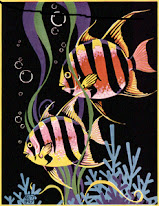This means the child is reading too slowly, or is reading words incorrectly, or losing his place, or not getting much meaning. Many children have these problems. It is very rarely dyslexia, nor lack of ability, nor immaturity - it is usually weak skills.
Tip: quit stopping to sound out when your child is reading to you. Tell your child any unknown words - even if you know he knows the word - tell your child the word and ask your child to keep reading. This will slowly build a better connection to better comprehension.
1) Sit down with your child and any storybook. Ask your child to find any word, point to it, and tell you what it is. Try this with several words. (Pay attention to whether your child has trouble seeing. Is your child squinting? Does he need a good eye exam?)
2) Give your child pencil and paper. Say: I want you to write down as many of the letters in each word as you can. (You are only concerned with letters b /d and g / p / q.) Say:
1) rainbow, 2) stable, 3) handle, 4) bike, 5) saddle, 6) sample, 7) riddle, 8) apron, 9) alligator,
10) label, 11) regrow, 12) window, 13) pedal, 14) dragnet, 15) maple.
You are checking to see if your child correctly prints b / d and g, p. (Letter q sounds like k, so we are skipping letter q.) A child must correctly identify every letter in the words he is trying to read. Confusing b /d and g / p / q is the reason many children start falling behind in 1st Grade.(For example, one of my tutor students going into 3rd grade was able to read words like boa constrictor, but was so slow and wrong about these five letters that he tested 2nd from the bottom of his entire class.)
Use my search box at the top of this blog to look for these topics: confuse b and d, and confuse p and q.
3) Get a list of the 1st 300 sight words.(All my books include it; all sight word lists are the same.) Start with the 1st word, learn 3 at a time. Ask your child to search for each sight word and circle the word 20 times in used books that he can write it. Being slow with sight words will cause poor fluency.
4) This blog has other supporting skills lessons to search: ce, ci, cy and ge, gi, gy, and gh and compound words. When a child has poor fluency, things can quickly get worse. Think about getting my book for your child's age group. Get Grandma to help or hire a personal tutor to teach my book because my books provide the lessons every reader needs. Contact me through this blog. I will help you.
I use ebay as my website. Search Instant Reading Help all my books will pop up. All are brand new and include my contact info; email or call for help. Thank you, Mary Maisner







